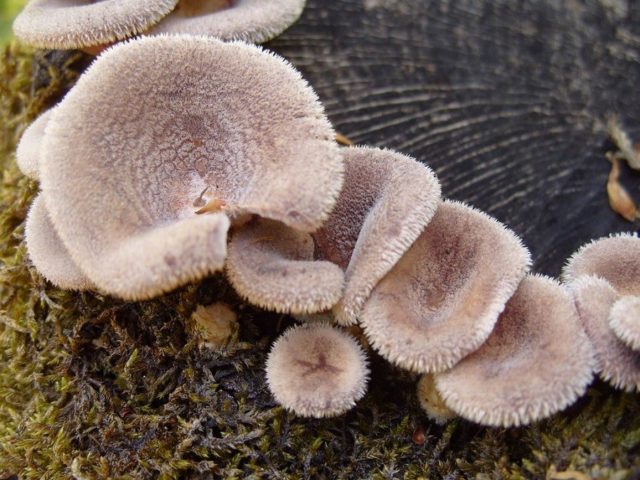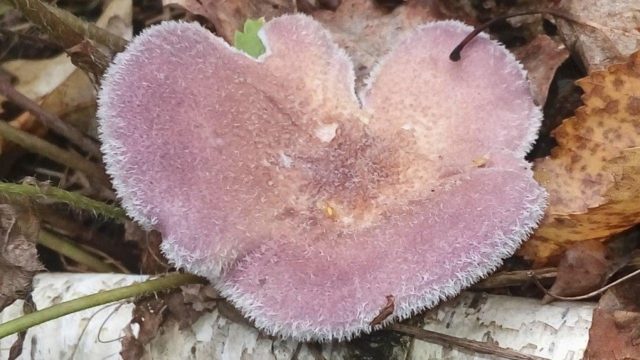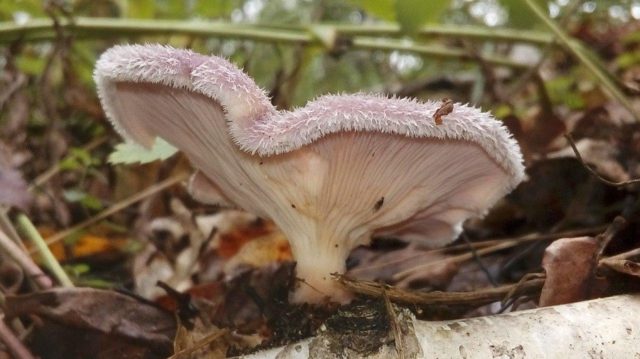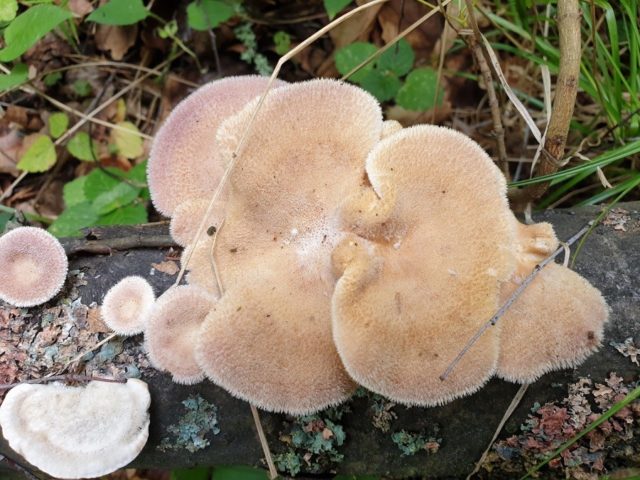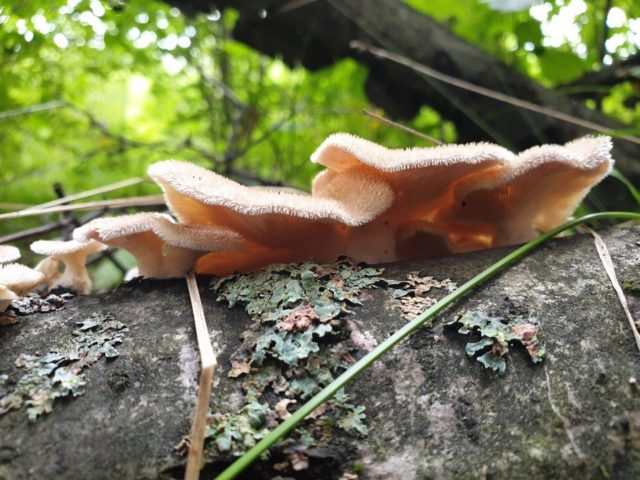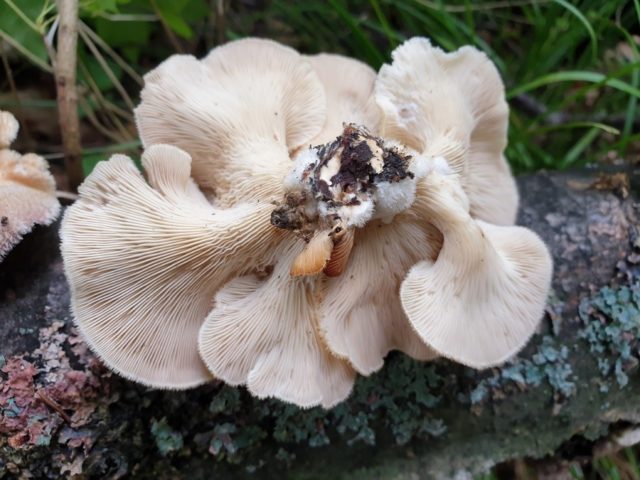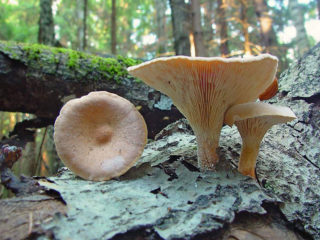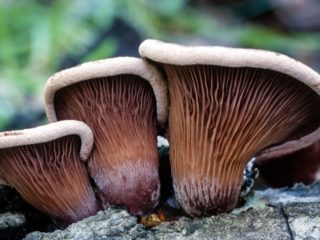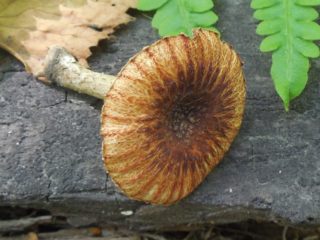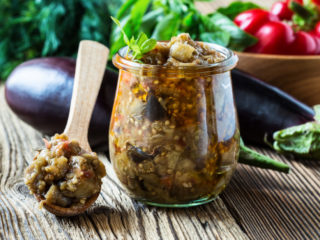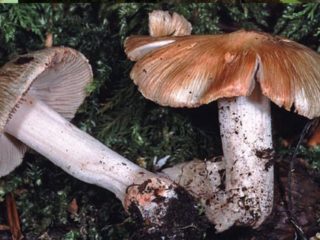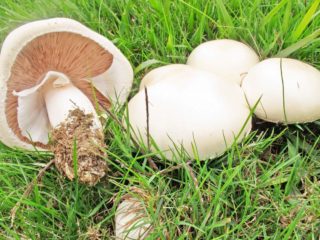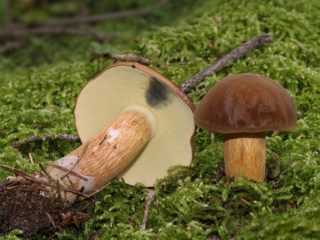Content
Panus rough is a representative of a large group of the Panus genus. These mushrooms are also called sawfoils. The Latin name for bristly sawfoil is Panus rudis. The genus is distinguished by a high concentration of protein. Mature specimens are much tougher than young ones, which was the reason for the name of the species. The latter are well absorbed and do not create problems in the digestive tract. Another feature due to which the mushroom got its name is its ability to destroy wood on trees and stumps. Even artificial structures on which panuses grow do not remain undamaged.
What does Panus rough look like?
The variety must be described in full.This allows mushroom pickers to accurately determine the name and belonging of the fruiting body to a known family. The panus consists of a cap and a leg, so the main attention is paid to these parts.
Description of the cap
The cap of the bristly sawfoil has an unusual shape. Most often it is lateral, funnel-shaped or cup-shaped. The surface is strewn with tiny hairs.
The color is yellow-red or light brown, sometimes with a pinkish tint. The diameter of the cap is from 2 cm to 7 cm. The pulp is without pronounced taste and smell, white spore powder, cylindrical spores.
Description of the leg
This part of the mushroom is very short, the length of the stem is no more than 2 cm. The thickness is the same, it can be up to 3 cm in some specimens. Dense, the color is identical to the cap, the stem is covered with hairs.
Where and how does it grow
The mushroom prefers deciduous or coniferous plantings and highlands. It is found on dead wood and coniferous wood, especially buried in the ground. It grows singly or in groups, but small ones. It bears fruit from the end of June, in high mountain areas a little later - from the end of July or in August. Some lovers of “quiet hunting” note the appearance of panus coarse in the autumn months (September, October). Lives in the Urals, the Caucasus, in the forests of the Far East and Siberia. Found in massive tree clearings and dead wood.
It can grow in unusual places, for example, like another representative of sawfoils in the video:
Is the mushroom edible or not?
Scientists classify the species as conditionally edible mushrooms. This suggests that panus can be consumed after preliminary preparation - soaking, boiling (25 minutes). It is recommended to prepare dishes from the caps of young specimens of bristly sawfoil. It is better to throw away old mushrooms and stems.
Many mushroom pickers believe that the nutritional value of the species is low. They try to consume it fresh, without preparing it. The exception is pickling.
Doubles and their differences
There are quite a large number of sawfoils in nature. There are species that an inexperienced mushroom picker can confuse with each other. However, the bristly variety has been poorly studied. Therefore, scientists have not yet identified species similar to it. Other panuses have too distinctive external parameters (coloring) that do not allow them to be mistaken for a rough panus.
Conclusion
Panus coarse has an unusual appearance, but can significantly diversify the diet. The description and photo will help mushroom pickers to easily find fruiting bodies to move them to their basket.
